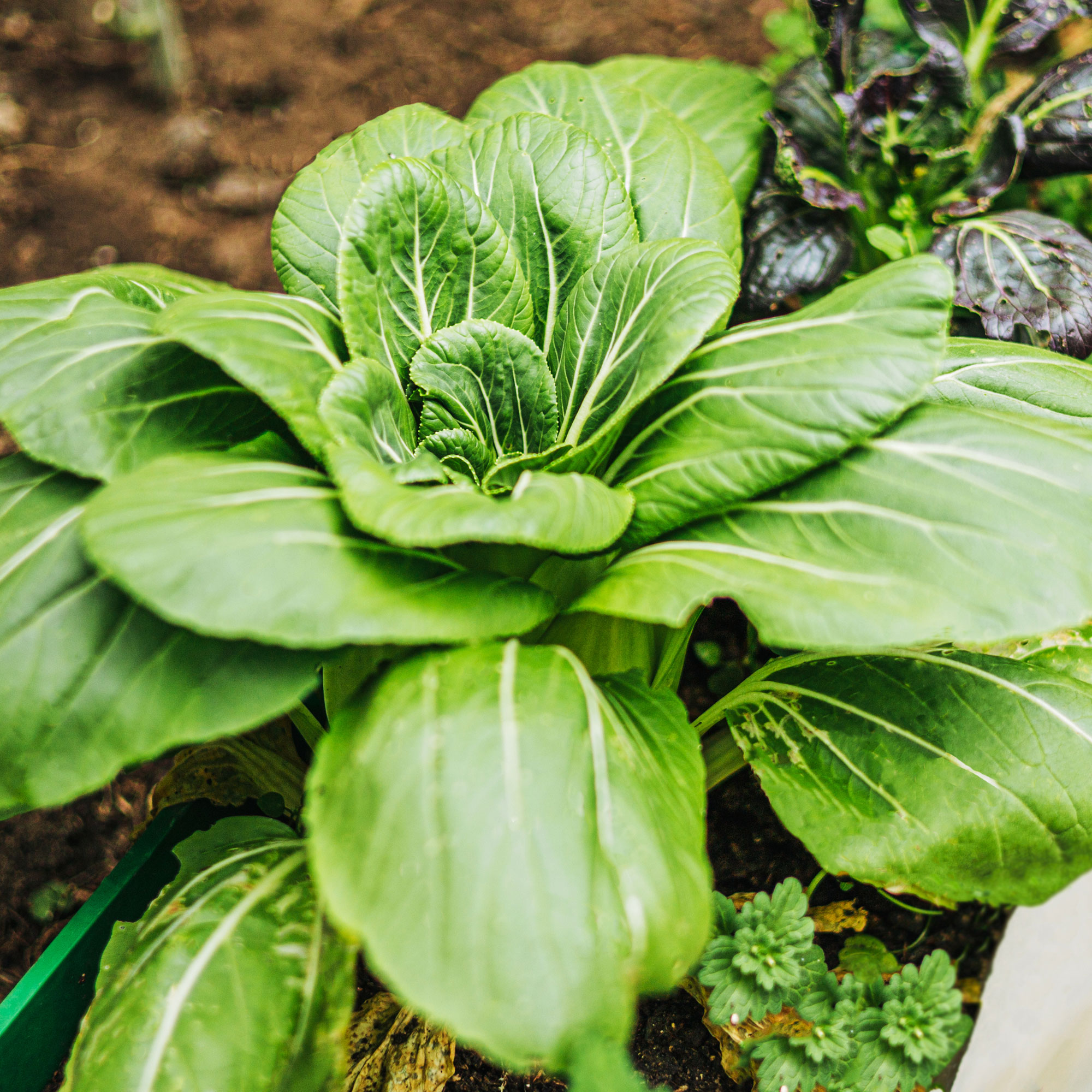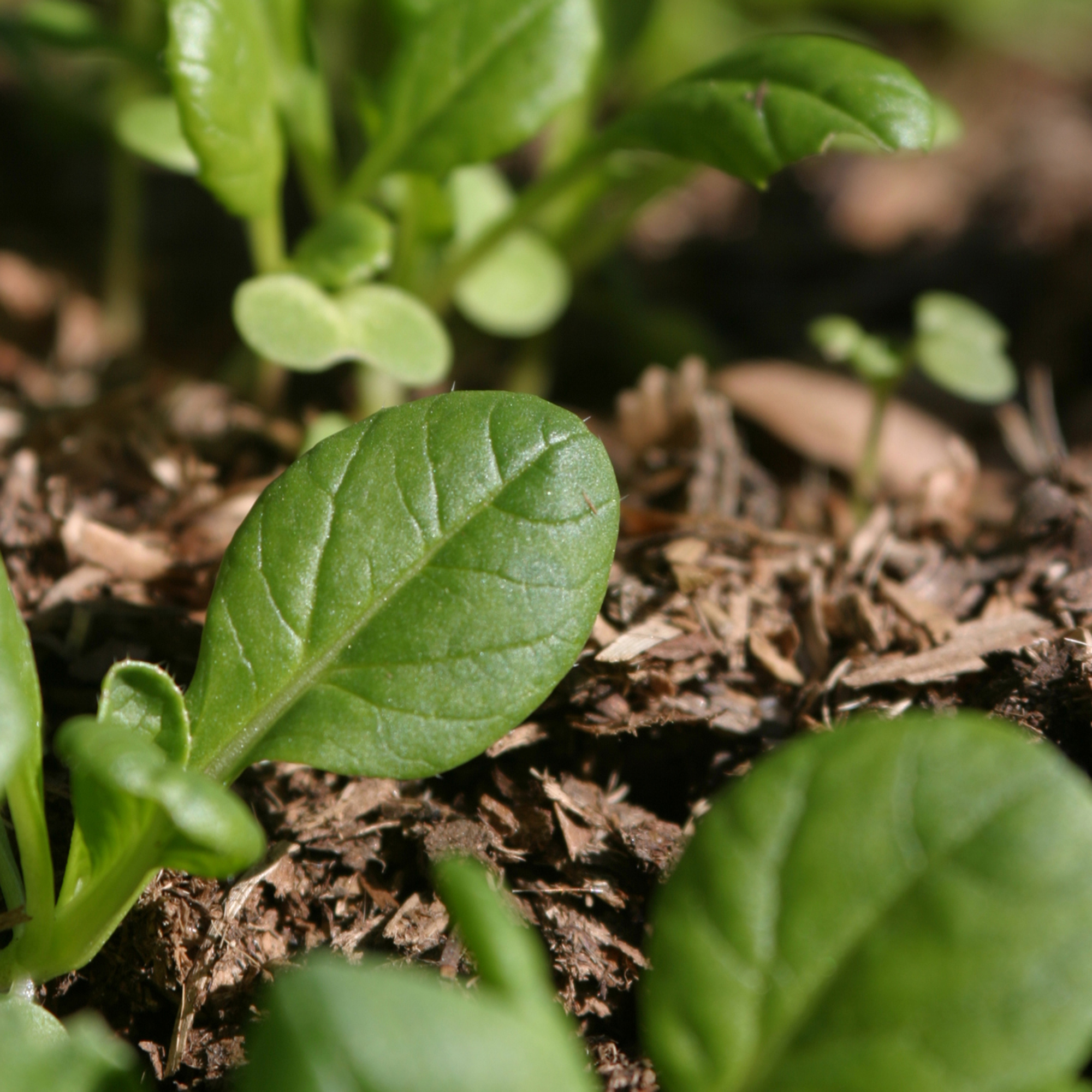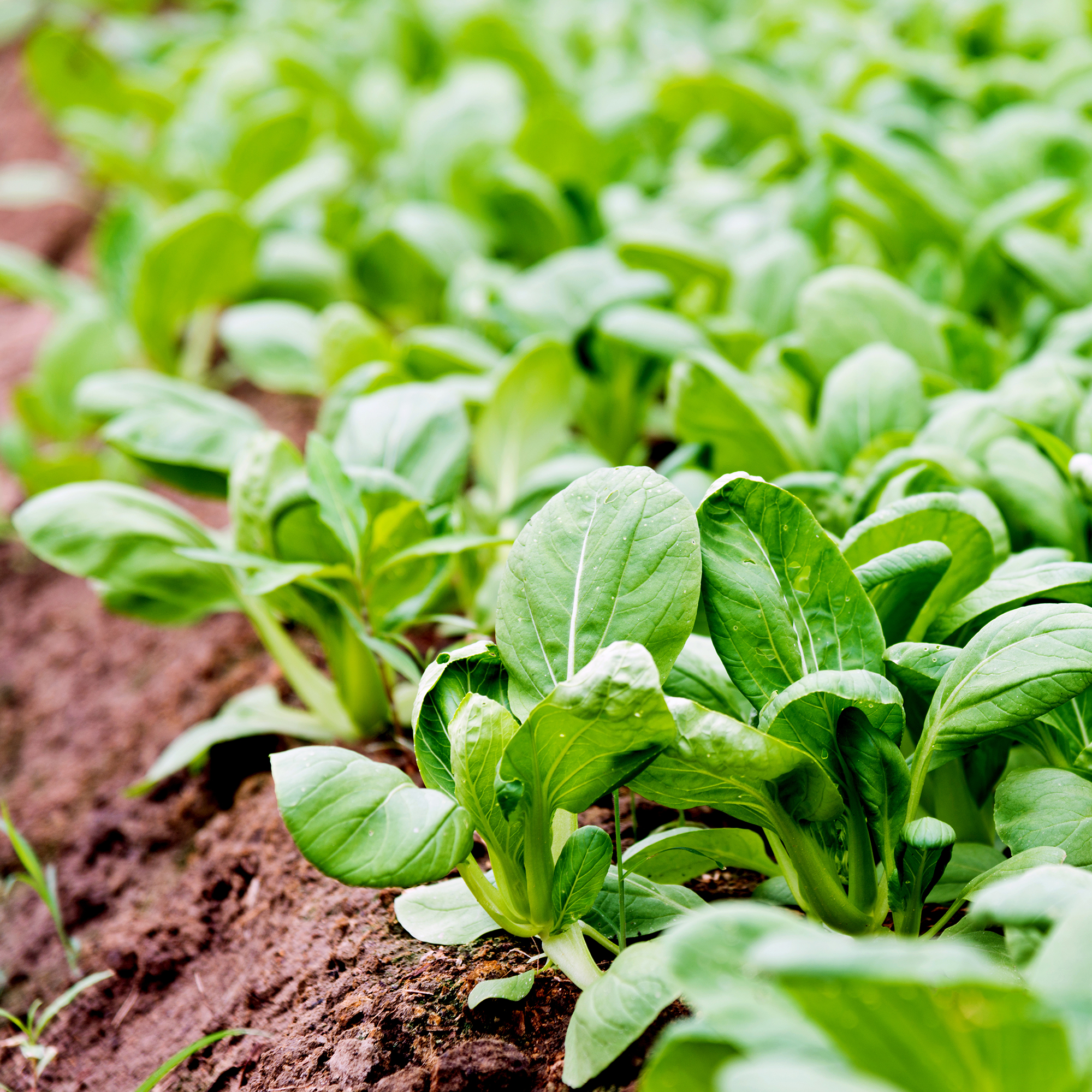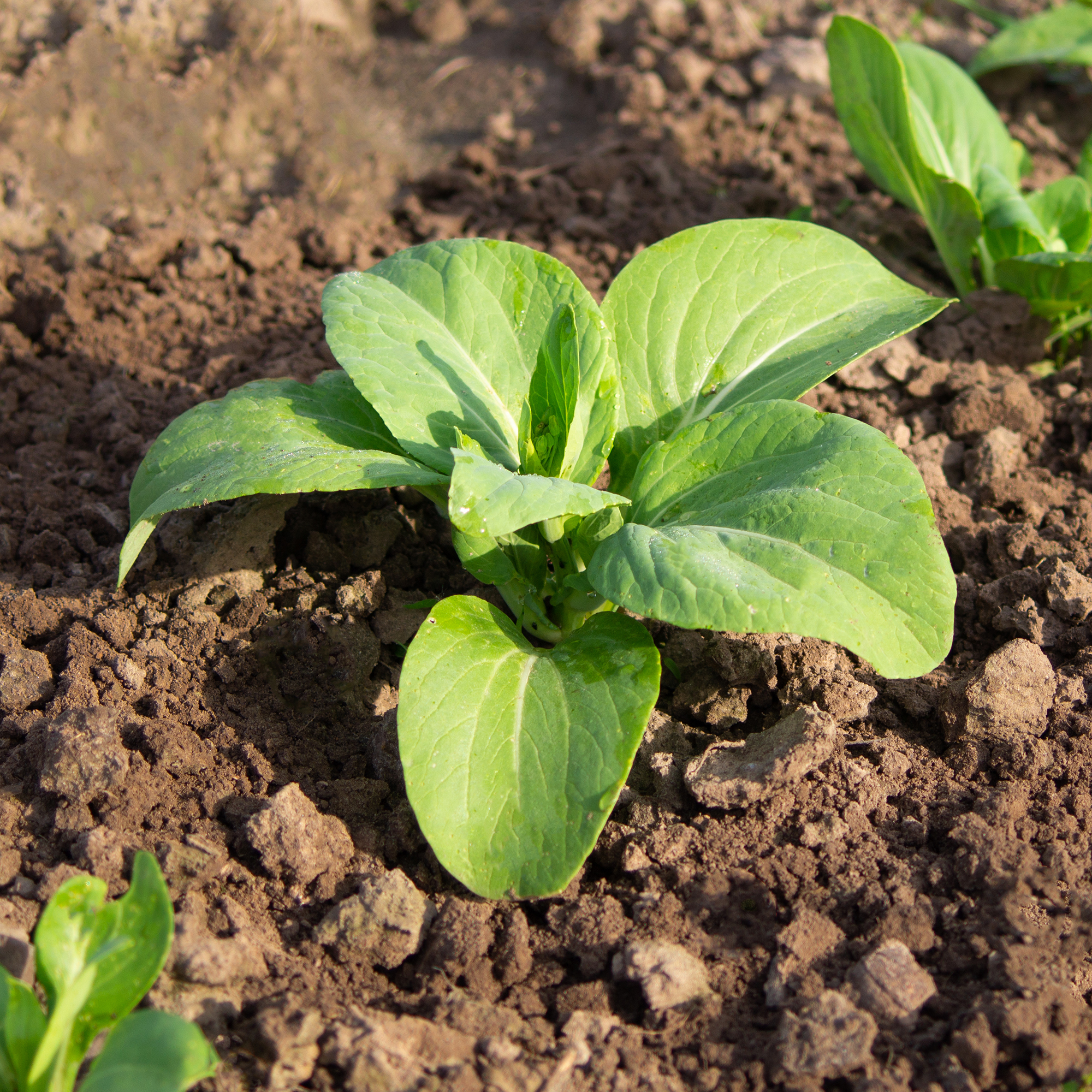
It’s about time we all got onboard the pak choi train. This bold brassica is a staple in so many dishes, and while it’s not the most expensive vegetable in the supermarket, buying a new pack every week can quickly add up. So, what if you knew how to grow pak choi instead?
Yes, you probably don’t need us to tell you that growing your own fruits and vegetables can save you some serious cash. While there’s the initial outlay of buying seeds, compost, trays, and tools, there are always gardening deals to be had. And when you’ve successfully grown these fruits and veggies in your garden or outside space, you’ll be set for months - and sometimes even years.
But no matter whether you just want to start a small vegetable garden or you aim to be fully self-sufficient, we’re here to remind you to leave space for pak choi in your veggie patch. It’s incredibly easy to grow, after all.
How to grow pak choi

‘With pak choi being so easy to grow, anyone can sow from seed and be harvesting leaves in as little as five weeks or for a full pak choi head up to ten weeks,’ explains Morris Hankinson, director of Hopes Grove Nurseries.
But growing pak choi from seed isn’t the only way to grow pak choi at home. Below, you’ll find everything you need to know about growing from seed and growing from supermarket scraps.
How to grow pak choi from seed

If you love growing your own fruits and vegetables from scratch, you’ll be happy to know that growing pak choi is a doddle. Here’s the scoop:
What you'll need
This 40-litre bag of organic fruit and veggie compost will definitely help you grow pak choi... and then some! The plant-based specialist formula is also child, pet and bee friendly.
This particular variety of pak choi is perfect for those who want to grow pak choi in pots. Allow four plants to a 35cm pot, or grow in rows if you want to sow directly into the ground.
This garden fleece will protect your crop of pak choi from slugs, snails, cabbage root flies, and any other critter that tries to eat it before you do. Plus, you can re-use it in the winter to protect your plants from frost.
Step-by-step

1. Buy your seeds
The pak choi you find in the supermarket is all the same. But growing your own veg allows you to step outside of the box and buy a different variety of pak choi.
‘There are numerous varieties of pak choi ranging in various shades of green and purple, and if a combination of seeds are sown, they look really attractive in any garden, raised bed or container,' notes Morries.
In fact, we’re particularly fond of red choi, which will provide your veg patch with a bright pop of purple while still offering that same great taste. Intrigued? You can buy Mr Fothergill's Red Pak Choi F1 Seeds from Amazon.
2. Choose your planting location
Unless you plan on growing a whole supermarket’s worth of pak choi in your garden, you won’t need much space to grow this popular brassica. After all, they grow in fairly tight vertical rosettes.
However, you do need to choose the right location to grow pak choi. And as pak choi prefer colder seasons to the sunny summer months, you should aim to plant your pak choi in a shaded area of your garden.
Morris adds. ‘Seeds can be sown into trays of compost undercover from springtime, or if you’d prefer, seeds can be sown directly where they will grow outside into some well-drained soil.’ In fact, pak choi is perfect for growing in containers, raised beds, or even a keyhole garden.
You also need to provide pak choi with the right soil. 'Well-draining, fertile soil is best for pak choi, so make sure to add some organic, well-rotted compost,' explains John Clifford, a garden expert from Gardenstone. 'To be technical, a pH level of around 6-7.5 is ideal, but don't worry about it if you can't measure this.’
When you’ve chosen your pak choi seeds and your desired planting location, you can sow them. ‘Sow them 2cm deep and in rows 30cm apart,' advises Morris.

3. Thin out the seedlings
Although it may seem counterintuitive, you need to thin out the seedlings after they’ve germinated. This should normally take one to two weeks.
Thinning out the seedlings will give the pak choi more room to grow and allow you to tailor the growing process to your own requirements.
‘Depending on at what stage you want to harvest, depends on how far apart you will want to grow each pak choi plant,’ explains Morris. ‘After sowing, gradually thin out seedlings so there is one plant about 10cm apart from the next if you plan on harvesting baby leaves (meaning the plant will be ‘cut and come again’), or up to 30cm apart if you would like to harvest a whole pak choi.’
You can then eat the thinned-out seedlings as a salad or stir-fry topper.
4. Protect from pests
Anyone who has ever tried to grow brassicas before will know that pests absolutely love them. And while there are so many ways to get rid of slugs and to stop your snails eating your plants, these critters will still try their best to eat your pak choi.
They’re not the only pests looking for a meal, either. Pak choi often falls victim to cabbage root flies and flea beetles. Thankfully, one of the best ways to protect your pak choi plants is to cover them.
'Protecting the seedlings with a cloche or fleece can be helpful to keep garden pests from eating them,’ advises Morris. And these aren’t too hard to come by, either.
As they grow, you can then decide whether to keep the pak choi in place (if you’ve planted them directly in the ground) or transplant them to their final growing place (if you’ve grown them indoors or in containers).
During this time, you also need to water your pak choi and feed it every now and then. John suggests, ‘Make sure to keep the soil constantly moist, so water regularly and don't let the soil dry out,' warns John. 'Use a balanced fertiliser every couple of weeks during the growing season, if you feel necessary.’

5. Harvest your pak choi
After a few weeks, your pak choi should be ready to harvest - and it’s a good idea to have a knife on hand to cut down your crop. However, again, this all depends on whether you want to just eat the leaves or you want a full head of pak choi.
‘For baby pak choi, you can harvest when the plants are 10-15 cm tall, which is about 30 days after sowing,' says John. 'For mature plants, harvest when they are about 30 cm tall, which will be around 45-60 days after sowing.’
When you’ve harvested your first load of pak choi, you just have to wait for it to grow back. But if you can’t wait that long, most experts would suggest sowing more seeds.
According to John, you should ‘sow small batches every few weeks for a continuous supply.’
How to grow pak choi from scraps
If you don’t want to grow pak choi from seed, you do have another option - and this involves growing pak choi from scraps from the supermarket. In fact, gardener Simon Akeroyd made a whole TikTok video about it.
To do this, you’ll need to first buy a head of pak choi from the supermarket of your choice. Then, all you need to do is cut the end off with a knife and place it on top of a jar of water. When doing this, make sure that the bottom of the pak choi is only slightly touching the water.

If you pop the jar on a windowsill and wait a few weeks, you should see a whole new head of pak choi grow from the jar. When this happens, you have a choice to make.
Your first option is to cut the head off there and then and then repeat the process with the bottom of the brassica. Your second option is to plant your newly-grown pak choi in compost and grow it either in-ground or in pots.
FAQs
Can you grow pak choi in pots?
Yes! Pak choi can grow incredibly well in containers, making it a great addition to a balcony garden or even greenhouse gardening.
However, you need to choose your pots wisely when growing pak choi in pots. Although the seedlings don’t need a huge amount of space to begin with, you’ll need to opt for large containers when thinning them out, as they need room to grow.
Can you eat pak choi once it has flowered?
If you leave pak choi to grow for too long before picking off the leaves or cutting off the heads, it’ll likely flower. This is generally not something that you want to happen to any of your garden crops, as it normally results in a bitter taste and often a strange texture.
So, while you can eat pak choi once it’s flowered, be warned that it may not taste as you expect.
Will you be growing your own pak choi this year?







